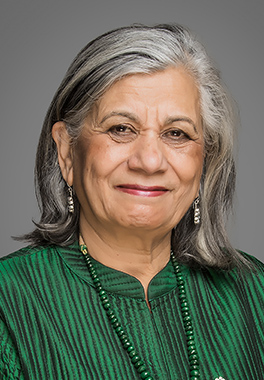
QUESTION PERIOD — Foreign Affairs and International Trade
Government Policy on Africa
February 20, 2020
Honourable senators, my question is for the Leader of the Government in the Senate. He may be happy that we’re going to pivot in my question to another place — or not so happy. I’d like to focus on Africa.
By 2050, the population of Africa is on track to be doubled, according to the UN, making up more than a quarter of the world’s population. African leaders and civil society leaders are keen to engage with Africa not just on development issues but also on trade, security and diplomatic issues. There are 54 countries in Africa; Canada has missions in 21 of them. In the last 15 years, we have closed missions in Gabon, Guinea, Niger and Malawi, and we have no trade agreements with African countries.
What is Canada doing now to work with African countries and people to capitalize on this moment of opportunity, not just for the people in Africa, but for ourselves as well?
Thank you, senator, for your question. The Government of Canada is aware of how important and dynamic the continent is to the world economy and well-being. Some of the world’s fastest-growing economies are found in Africa. I’ve been advised the government is aware of the changing context of our relationship with African countries and has been working to modernize and strengthen our partnerships accordingly.
You mentioned, senator, the question of trade. Honourable senators, Canada supported the negotiations of the African Continental Free Trade Area, AfCFTA, which came into force in May 2019, and Canada was also the founding donor to the Africa Trade Policy Centre within the United Nations regional body for Africa, the Economic Commission for Africa.
I’m advised the government has been pursuing different innovative ways to finance sustainable development within the African countries. Budget 2018 allocated over $900 million over five years for an International Assistance Innovation Program. The budget also included $620 million for the Sovereign Loans Programs because the development of the economies of the country is also fundamentally tied to the investment in human capital and the ability of African countries to benefit from the window of opportunity, which you properly identified.
Finally, I will add that Canada places a particular emphasis on education and the education of girls in Africa, a key component both in advancing equality but also advancing economic well-being. That was made tangible with an investment of $400 million to providing quality education to girls in conflict zones and in fragile settings for the well-being of the economy, society and ultimately for all of us in the world.
There is a threat of another kind looming over parts of Africa, and that is the invasion of locusts. It is completely unimaginable to our contexts, but National Geographic has described it as something out of the book of Exodus, with swarms of locusts over Somalia, Ethiopia, Tanzania, Uganda, South Sudan — I have seen a map — and maybe into Pakistan. So I worry about the immediate impact, especially the food shortages that will impact millions of people and, in particular, 6.5 million children.
Can you tell us whether this issue was discussed with the Prime Minister when he visited Ethiopia and is the government willing to provide extraordinary assistance in this extraordinary situation?
Thank you for the question. I share your concern with the devastation of desert locust infestations on all the issues you mentioned. Though I cannot tell you whether the issue was discussed, I am pleased to report in this chamber — and I think this is breaking news because I may be the first one to be announcing it on behalf of the government — that the government is contributing $1 million to the United Nations Food and Agricultural Organization to support its larger appeal of $76 million to help control the spread of the locust outbreak and to protect the lives and livelihoods of affected communities.

